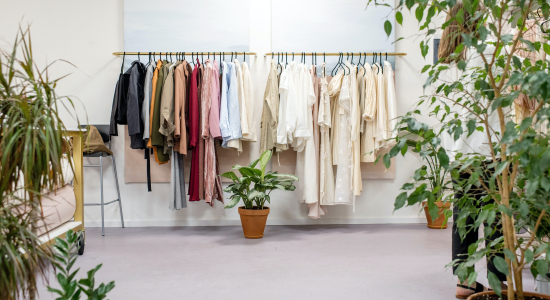Fast vs. Slow Fashion

Photo by Ksenia Chernaya
Fast fashion has quickly become a buzzword synonymous with poorly made clothes and disgruntled customers. It’s also extremely harmful to the environment. In fact, the UN Environment Programme found the fashion industry is responsible for 8-10% of all global carbon admissions. But what exactly is fast fashion? And why is it so bad for consumers and the planet?
Fast Fashion: Fashion fashion refers to quickly made goods mass-produced by machines using low-quality fabrics and sold for low prices. Fast fashion garments are generally made using unethical production methods such as sweatshops and child labor. These garments are very trendy and usually end up in landfills after being worn by one customer for one season.
Slow Fashion: Slow fashion refers to goods that are made by hand in a more time-intensive process using higher-quality, long-lasting materials and created by designers with an artistic vision. Designed and produced more thoughtfully, slow-fashion garments are also more likely to be made using sustainable materials and ethical production processes. The products are designed to be worn for many years and can even be passed down or born again when thrifted by a new consumer.
In simple terms, fast fashion is going to a restaurant and seeing 2 other women wearing the same cropped 30€ jacket from the Zara fall collection. Slow fashion is wearing your mum’s leather jacket from the 70s and being stopped on the street by strangers wondering where you bought it.
For many consumers, fast fashion is a major temptation due to easy access and low price points. “Shopping spree” culture means consumers are accustomed to purchasing many low-priced garments at once, crowding their wardrobes and having a major negative impact on the environment. The average consumer in the US throws away 36.9kgs of clothes each year according to Earth.org.
At Wo-mum, we encourage shoppers to consider their consumption levels and choose more sustainable ways to shop. By choosing slow fashion, you can support a local designer, choose sustainable materials, and buy unique pieces that will last for years.
For trend-conscious consumers, check out your local thrift store. Thrift/vintage shops keep up with current trends and often have sections devoted to current silhouettes so you can still be in style but in a more sustainable, unique way. Search for clothing swaps in your local area where you can bring and exchange unwanted items from your wardrobe. Swaps are a great opportunity to meet other sustainably-minded local people and you can leave with several free, new pieces. For mums and expecting mums, you can check out our sustainable, slow fashion brand, https://www.wo-mum.com/en/ We also have a renting option so you can enjoy our fashionable, sustainable garments for 6 months and then return them to be loved by a new mum.
We know fast fashion is a hard habit to break. But as mums, we have to lead by example. Put ethical treatment of workers, animals, and the planet over this season’s must-have item. Your wallet and the planet will thank you.
SOURCES: